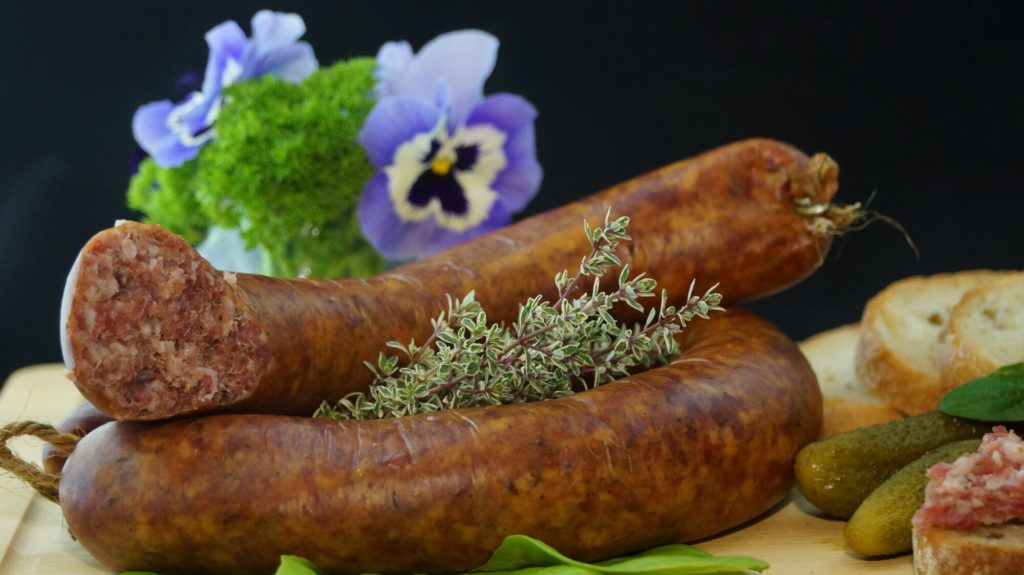Have you ever found yourself eating some delicious sausage, then asked yourself, “what is sausage casing made of?” Sausage is an international favorite when it comes to food. We eat it with gravy, on bread, for breakfast, and for many other reasons.
If you’ve been wondering what is sausage casing, or you need ideas on how to make your own, then you’ve come to the right place! Read on to learn what three different types of sausage casings are.
Are Sausage Casings Natural?
Sausage casings are divided into two categories: natural casings and artificial casings.
Typically, natural sausage casings are made from the submucosa of the small intestines. These can come from various animals such as hogs, pigs, cows, and even sheep casings. Though it may sound somewhat repulsive at first, it’s actually a very healthy option and tastes amazing.
Natural sausage casings are also preferred by many because of the satisfying “snap” they make when people bite into them. This signature sound is one of the main reasons why natural casings have been the most common choice throughout the centuries.
Artificial casings are much cheaper to manufacture than natural sausage casings. With this in mind, however, they lack the satisfying, crunchy texture that is present in natural casings.
Hog Casings
The hog is the most widely used meat for creating sausage casings. In fact, in making natural sausage casings, manufacturers not only use the lining of the small intestines but also use either the stomach or large intestines as well.
After removing the small intestines from the hog, the lining is turned inside out and soaked overnight in water. This improves the “sliming” process—which is the process of manual removal.
Sheep Casings
Unlike hog casings, sheep casings are mostly used for fresh frying sausages. Though the process of preparing sheep casings is similar to that of hogs, there are a few differences. For instance, the water that the sheep casings are soaked in is significantly colder than that used in preparing hog casings.
Furthermore, the sausages made by sheep casings are different from hogs. Sheep casings are used to make weiners and chipolatas, while hog casings are used mainly for frankfurters.
Beef Casings
These are quite different from the other two types of casings discussed. While sheep and hog casings are used for smaller, individual links, beef casings are used to manufacture large-diameter sausages such as bologna or salami.
In the production of large sausages, the bladder of the cow is also used. This is because the beef bladder is the largest in diameter of casing from cows.
Where To Buy Sausage Casing
Sausage casings can be bought almost anywhere—from your local Walmart to many different sites online. However, though the range of places to buy sausage casings is very wide, there’s no better place to purchase from than World Casing Corporation.
The variety of different choices at World Casing Corporation is almost endless. Additionally, if you contact them today, you can get a free sample to taste before making your purchase! If this doesn’t persuade you to try out their sausage casings, we don’t know what will.
Contact World Casing Corporation and get your free sample today! You won’t be disappointed.

